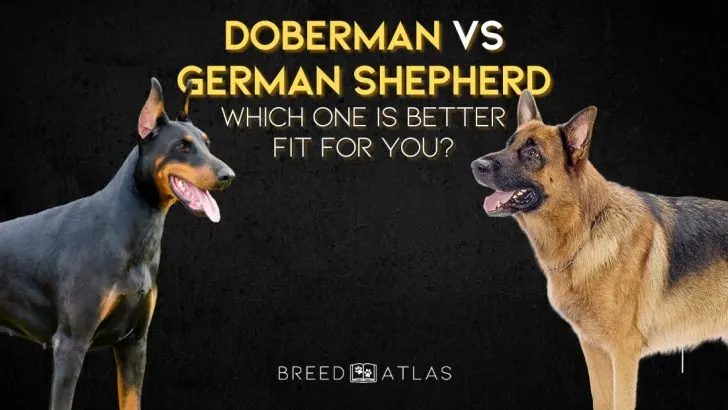Doberman Pinschers and German Shepherds are among the most popular dog breeds, known for their exceptional qualities as family pets and guard dogs.
These velcro dogs are known for being easy to train and having the potential for fierce protection if necessary. While the mix of the two breeds and many other Doberman mixes exist, we won’t delve deeply into that today.
One thing is for sure: both of them have the potential to be your loyal guardians. Thanks to the high level of intelligence showcasing in both of these dog breeds, you won’t have problems training them.
Both breeds show outstanding compatibility with families who live an active lifestyle. They differ slightly in temperament and appearance.
If you’re considering adding one of these breeds to your household, the following guide will assist you in determining which might better suit your family’s needs.
Visual Differences: Doberman vs German Shepherd
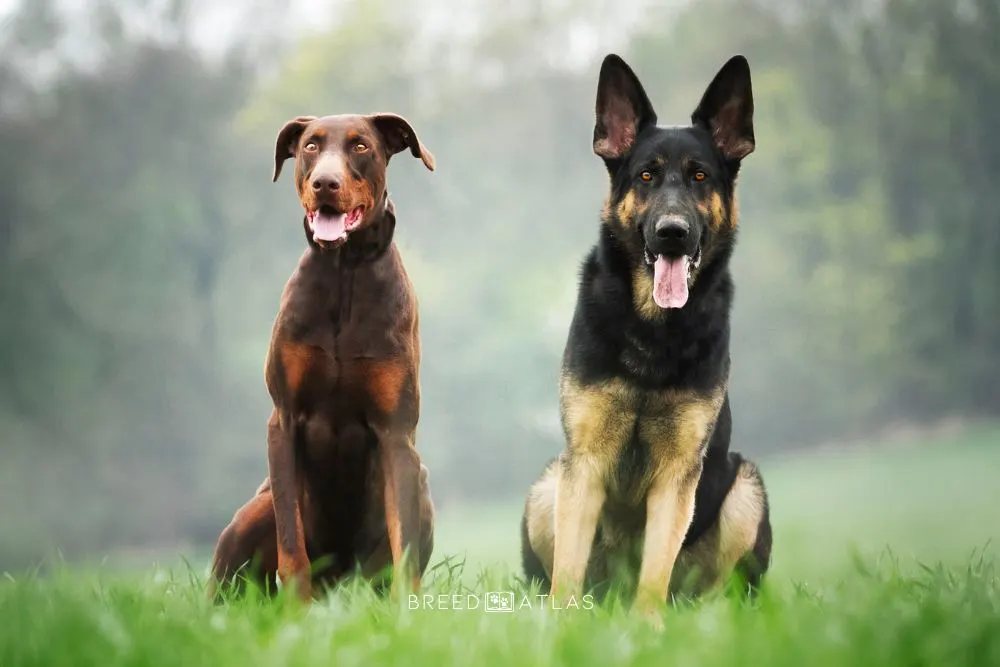
Short Analysis Of The Two Dog Breeds
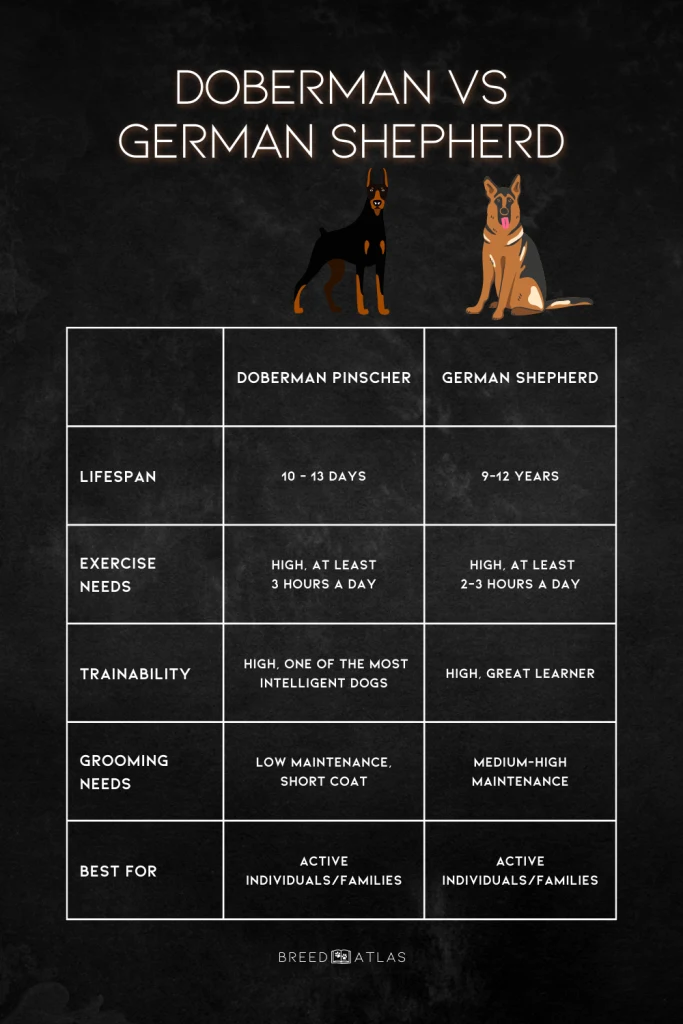
Doberman Pinscher Vs German Shepherd: Size
German Shepherds and Doberman Pinschers share similar heights but vary in weight.
German Shepherds typically stand between 22 to 26 inches tall at the shoulder, while Dobermans range from 24 to 28 inches.
German Shepherds generally weigh between 50 to 90 pounds, while Dobermans are typically heavier, weighing in at approximately 60 to 100 pounds.
Both breeds are considered large dogs with high energy levels, requiring ample exercise and space to thrive.
Their size and energy make them well-suited for active lifestyles and tasks such as guarding, herding, and participating in various canine sports.
The Colors The Doberman and The German Shepherd Come In
We often imagine certain dog breeds coming only in the most common coat colors and patterns.
But, I’m here to tell you that there are more colors when it comes to these two dog breeds! Let’s get into that!
Doberman Pinscher Coat Colors
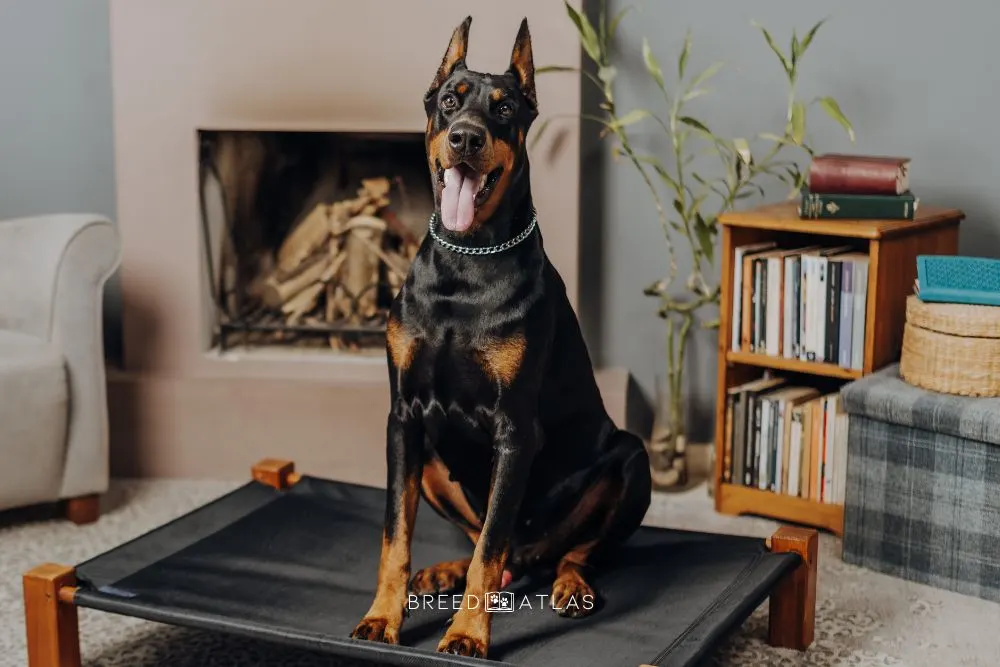
Believe it or not, Dobermans can have a diverse range of coat colors and patterns, each with its own unique characteristics and genetic considerations. Let’s take a look!
- Black and Rust: The most common color pattern, characterized by a black coat with tan or rust marks on the chest, legs, and face. This is the coat color that you imagine when you think of a Doberman.
- Red and Rust: Less common than black and rust, red Dobermans have a solid red coat with rust markings. Red is a recessive gene, making this color variation rarer in the breed.
- Fawn or Isabella: A lighter variation, fawn Dobermans have a beige or light brown coat resembling their Weimaraner ancestors. This coat color results from a dilution gene.
- Blue: Blue Dobermans have a diluted black coat, appearing as a silvery-gray color. This color variation is also associated with color dilution alopecia and may result from limited breeding practices.
- Cream or White: Cream-colored Dobermans have a pale coat due to a partial loss of pigmentation. This color variation is rare and may be associated with health issues such as poor eyesight and skin problems.
- Albino: Albino Dobermans have a completely white coat with pink or colorless eyes, resulting from a lack of melanin pigment. Albino dogs may exhibit health issues such as poor eyesight, photosensitivity, skin problems, and other different things.
- Pure Black: These Dobermans have a solid black coat without any rust markings. This coloration may result from a genetic mutation and is not officially recognized by breed standards. Black dogs can face visibility issues, particularly at night, increasing the risk of accidents.
Each coat color variation in Dobermans carries its own set of genetic considerations and potential health implications, highlighting the importance of responsible breeding practices and thorough veterinary care.
German Shepherd Coat Colors
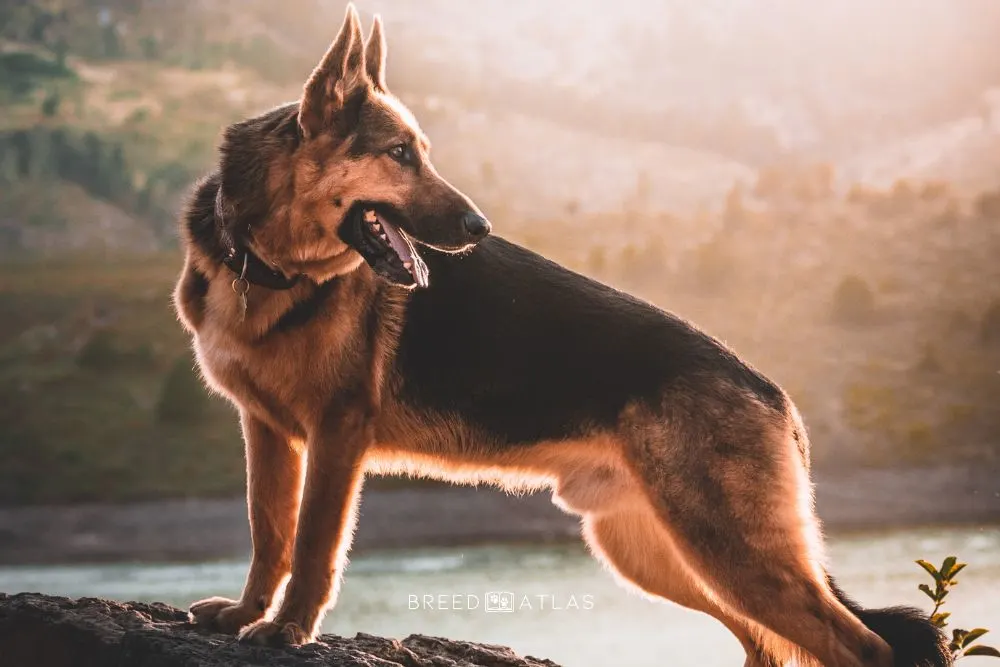
German Shepherds can display a variety of coat colors and patterns, each with its own unique characteristics.
- Black and Tan: This is the most common color pattern for German Shepherds, characterized by a black body with tan or cream-colored parts on the chest, legs, and the underside. Variations include black and red, black and cream, and black and silver.
- Bicolor: Bicolor German Shepherds have a predominantly black body with distinct tan or cream-colored markings on the lower legs and sometimes on the forelegs in a “V” shape. These dogs typically have richly pigmented black areas on their legs and toes.
- Sable: Sable German Shepherds have guard hairs tipped with black, resulting in a varied appearance ranging from light to dark shades. The more tipping on the guard hairs, the darker the dog’s coat. Some sables may exhibit agouti banding or grizzling on their neck, shoulders, tail, and saddle markings.
- Solid Black : Black German Shepherds are born black and remain so throughout adulthood, occasionally with a white spot or “blaze” on their chest or toes. This color is caused by a recessive gene and is relatively uncommon within the breed.
- Solid White: White German Shepherds are not albinos but have a recessive gene that masks their true color and pattern. The amount of white on the dog determines the underlying masked color, ranging from pure white to buff or cream.
- Blue: Blue German Shepherds have a diluted black coloration, resulting in a dusty or light gray coat with a gray leather nose. This coloration is considered rare and is the result of a recessive gene.
- Isabella: Isabella German Shepherds, also known as lilac or mouse-gray, have a washed-out silvery-blue coloration due to a recessive gene dilution. This color is less common and is considered faulty for showing purposes.
- Liver: Liver-colored German Shepherds have all black parts replaced with a brown or liver coloration, ranging from light to dark shades. They may also have light eyes that darken with age.
- Panda: Panda Shepherds have a unique piebald pattern with white on at least 30% of their body, mixed with patches of black and brown. This pattern is the result of a genetic mutation rather than crossbreeding.
These are some of the most common coat colors and patterns found in German Shepherds, each contributing to the breed’s distinctive appearance.
Doberman Pinscher Temperament Analysis
The Doberman was originally bred as a personal bodyguard – did you know that?
In the late 1800s, Karl Dobermann, a German tax collector, envisioned having a tough security dog, owing to his concerns for personal safety.
With a vision to have an ideal protector, he sought traits such as unwavering loyalty and affection towards its owner and fearless courage in defense. This perfect dog for the protection needed to be large, strong, powerful, have a lot of stamina, and be intelligent.
The result is Doberman Pinscher, embodying all of these characteristics perfectly, as both a devoted friend and an imposing guard dog.
Doberman Pinschers are renowned for their traits, described by their affectionate nature, sharp alertness, muscular build, gentle manners, and persistent protectiveness.
They possess a playful disposition, are friendly towards others, and exhibit fearlessness and athleticism. Their loyalty is reliable, and they are typically excellent companions for children and large families.
These dogs really like following you around wherever you go. It is simply in their genes to follow you, ensuring you are safe. They are one of the most protective breeds.
Doberman Pinschers have earned recognition as exceptional working dogs. They have served in various capacities, including military and police roles, as therapy and service animals, in search and rescue efforts, and excel in various dog sports.
Additionally, they have excellent skills as guard dogs, and some individuals also enjoy having Dobies assisting with tasks such as working on farms or in domestic settings.
German Shepherd Temperament Analysis
Let me provide you with a little German Shepherd overview.
In the late 1800s, German cavalry officer Captain Max von Stephanitz collaborated with fellow breeders to crossbreed northern and central district herding dogs, laying the foundation for the modern German Shepherd.
As German Shepherds were originally bred for herding sheep, it gave them this inherited intelligence, confidence, loyalty, and a strong desire to please.
Their innate intelligence makes them relatively easy to train, as they are quick learners who respond well to positive reinforcement such as rewards, praise, and play – attributes that make them ideal candidates for police work.
Early socialization is essential for German Shepherds to ensure they grow into well-mannered dogs. Despite their trainable nature, German Shepherds possess abundant energy levels that require regular physical exercise and mental stimulation to thrive.
Without proper outlets for their energy, they may struggle in less active environments. A GSD breed that is not active is like having a sports car that stays in your garage. It just doesn’t make sense.
The German Shepherd personality is generally easygoing in family settings. This is an unobtrusive dog. You can leave them around children since they usually have endless patience.
Training A Doberman Vs. German Shepherd
Training a Doberman and a German Shepherd involves understanding both of their temperaments and needs.
Dobermans sometimes require positive reinforcement before participating fully in training sessions, while German Shepherds are typically more eager learners. Both breeds benefit from positive attitudes, mental stimulation, and consistent training routines.
However, training approaches may need to be tailored accordingly due to their differences in prey drive and energy levels.
Overall, patience, consistency, and understanding of each breed’s unique characteristics are key to successful training outcomes.
Doberman Exercise & Training Needs
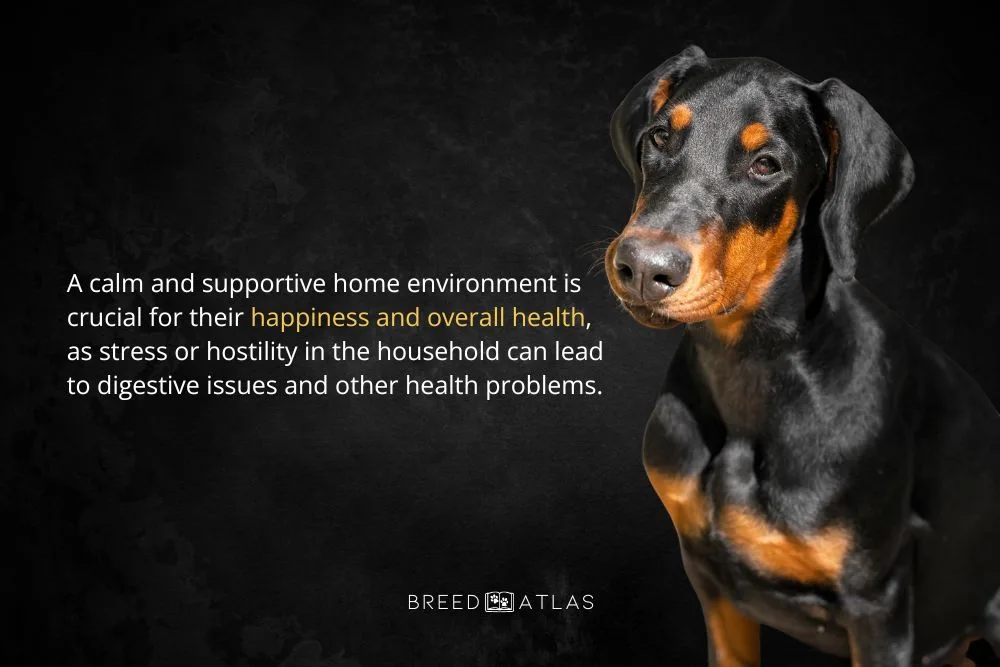
Dobermans are known for their eagerness to learn and a strong desire to serve their owners. They are among the smartest breeds, ready to easily pick up new tricks and tasks. However, gaining their respect is essential for successful training.
These dogs are observant and constantly assess their surroundings, making it important to establish a bond of trust and authority. Invest a bit of time in establishing a strong bond with your Dobie.
While they are loyal and devoted companions, inconsistent training can lead to disobedience and behavioral problems. Therefore, positive reinforcement and a firm yet loving approach are recommended for effective training.
Socialization is also key for Dobermans to remain friendly and accepting of new people, animals, and environments. This helps prevent any tendencies towards aggression that may arise if they are not properly introduced to different stimuli from a young age.
It’s important to note that Dobermans are sensitive creatures, and their well-being can be affected by their environment. I know that people have a bit of a bias towards them, but it really is unjustified.
A calm and supportive home environment is crucial for their happiness and overall health, as stress or hostility in the household can lead to digestive issues and other health problems.
German Shepherd Exercise & Training Needs
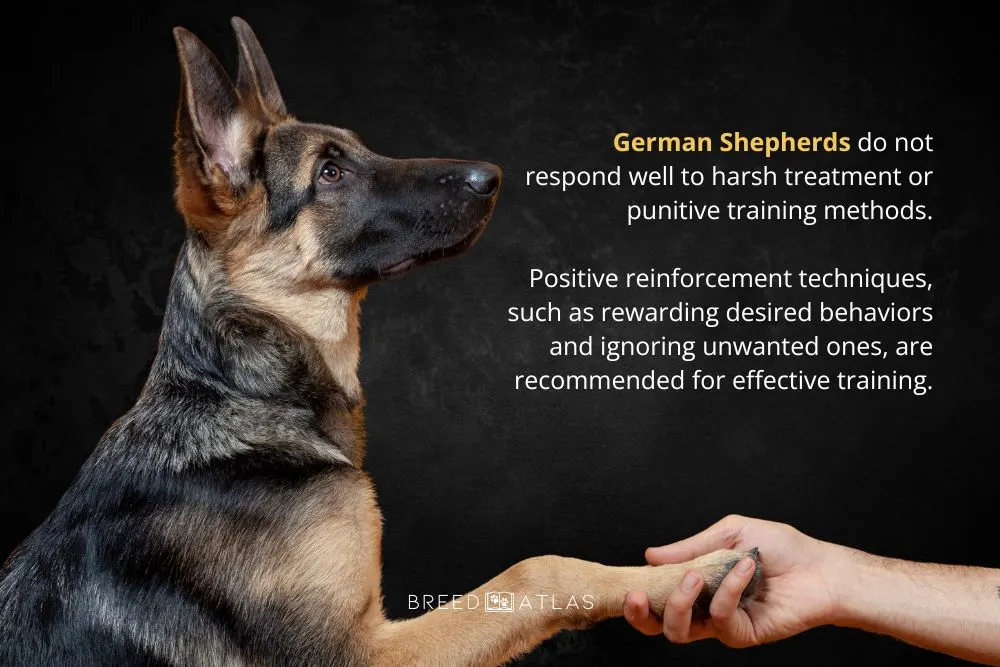
German Shepherds are known for their incredible obedience, making them suitable for even first-time owners. Training them is relatively easy due to their intelligence levels and willingness to please their owners.
While they may display occasional stubbornness, a firm but gentle approach is usually all needed to overcome it. Therefore it is important to properly leash train them. They are a bit independent, and can be great escape artists.
Unlike Dobermans, German Shepherds do not respond well to harsh treatment or punitive training methods. Positive reinforcement techniques, such as rewarding desired behaviors and ignoring unwanted ones, are recommended for effective training.
Treats or praise can be used as rewards during training sessions, but it’s important to avoid overfeeding to prevent obesity, which the breed is prone to.
Socialization from an early age is equally important for German Shepherds. Exposing them to various environments and people helps build their confidence and reduces the likelihood of aggression toward unfamiliar situations or individuals.
Regular socialization contributes to a well-behaved German Shepherd.
Let’s Talk Health: Taking Care Of A Doberman Vs German Shepherd
Caring for your dog’s health is crucial for their well-being and happiness. Regular veterinary check-ups are vital in detecting potential health issues early on.
A balanced diet with proper nutrition recommended for their age, size, and breed is essential for optimal health. Regular exercise is also important to keep your dog physically fit and mentally stimulated.
Keeping up with vaccinations and preventative medications, such as flea and tick treatments, helps protect them from common diseases and parasites.
Additionally, practicing good dental hygiene, such as regular teeth brushing, can prevent dental problems and promote better oral health. Cleaning their ears regularly or mentioning it to your groomer is also very important.
Providing a safe and nurturing environment with plenty of love and attention contributes to your dog’s happiness and longevity.
Doberman Pinscher Health & Care
Keeping your Doberman in top shape involves work. These dogs should maintain a lean physique, so it’s crucial not to overfeed them.
Opt for high-protein kibble to fuel their active lifestyle, but be aware of portion control and avoid free-feeding habits. With their boundless energy, Dobermans require physical and mental stimulation because they need lots of activity, around 2 to 3 hours of exercise or training daily.
Their natural athleticism and intelligence make them well-suited for agility training, obedience trials, and other canine sports. Fortunately, grooming is relatively low-maintenance for Dobermans due to their short coat, which sheds minimally.
A weekly brushing session should suffice, along with occasional baths when visibly dirty. Regular dental care, nail trimming, and ear cleaning are essential to their grooming routine.
However, it’s crucial to remain vigilant about potential health issues, as Dobermans are predisposed to conditions like heart disease, hip dysplasia, cancer, and obesity.
By providing proper nutrition, regular exercise, and attentive veterinary care, you can help your Doberman live a long, healthy life.
See also: Why Do People Crop Doberman Ears And Should You Do It
German Shepherd Health & Care
German Shepherds also enjoy a diet rich in high-quality proteins to support their energetic lifestyle. It’s crucial to avoid foods containing cheap fillers like wheat, soy, corn, or animal by-products, which can contribute to weight gain and inflammation in their organism.
Ensuring they receive around 2 hours of daily exercise and mental stimulation through obedience training, puzzle toys, and interactive games is necessary.
With their outstanding intelligence and athleticism, German Shepherds often excel in many canine competitions, showcasing their versatility and adaptability.
Their grooming needs include regular brushing, daily dental care, nail trimming, and weekly ear cleaning. Compared with the Doberman, the German Shepherd needs much more care regarding their coat.
Longer coats are prone to tangling, but it is a good thing that they have these rough and thick, long coats – they can be held as guard dogs that live in your yard.
Despite their powerful appearance, German Shepherds are prone to certain health issues. Their distinctive downward-sloping hindquarters can predispose them to issues later in life, such as hip dysplasia and arthritis.
Additionally, they may be prone to degenerative myelopathy, spinal cord disease, and pancreatic issues. Other potential health concerns include Von Willebrand’s disease, a blood clotting disorder, and conditions affecting their eyes, such as progressive retinal atrophy.
However, with proper care, regular veterinary check-ups, and a nutritious diet, you can help your German Shepherd lead a healthy and fulfilling life, minimizing the impact of these potential health challenges.
So, Which One Is The Perfect Match For You?
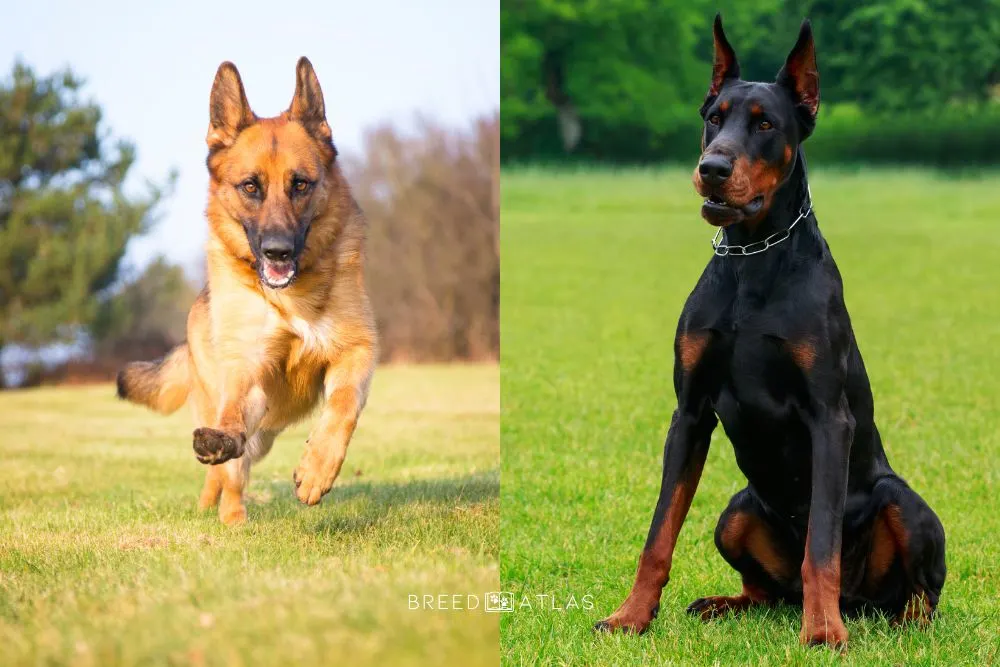
The Doberman and the German Shepherd share many similarities, including being energetic, loyal family members, natural protectors, and highly intelligent. But which one should you choose between the clash of the giants: Doberman vs German Shepherd?
Both breeds are recognized as the smartest and toughest dogs, making them popular choices for various roles, including guarding and working.
When choosing between the two breeds, it’s essential to consider factors such as the time you can dedicate to exercise, whether you prefer a dog that craves constant companionship like the Doberman, and if you have other pets, as German Shepherds will need proper socializing for that.
Both breeds can make excellent pets with wonderful temperaments and effective guard instincts with proper training and socialization.
The decision of which dog suits you best – a Doberman or a German Shepherd, should be based on which breed best fits your lifestyle. Doberman’s need to be around and not to be left alone for a long time might not suit you.
Also, a bit more independent dog such as the German Shepherd is for some people a better dog breed, and it’s a good idea for people who don’t like to have a dog following them around all the time.
The American Kennel Club approves both dog breeds; both are easy companions and lovely to be around.
For families with an active lifestyle, both the Doberman and the German Shepherd can thrive. In case you and/or your family don’t live in such a way, I would recommend looking for a different breed. Read next: How To Make Doberman Ears Stand Up Without Cropping?
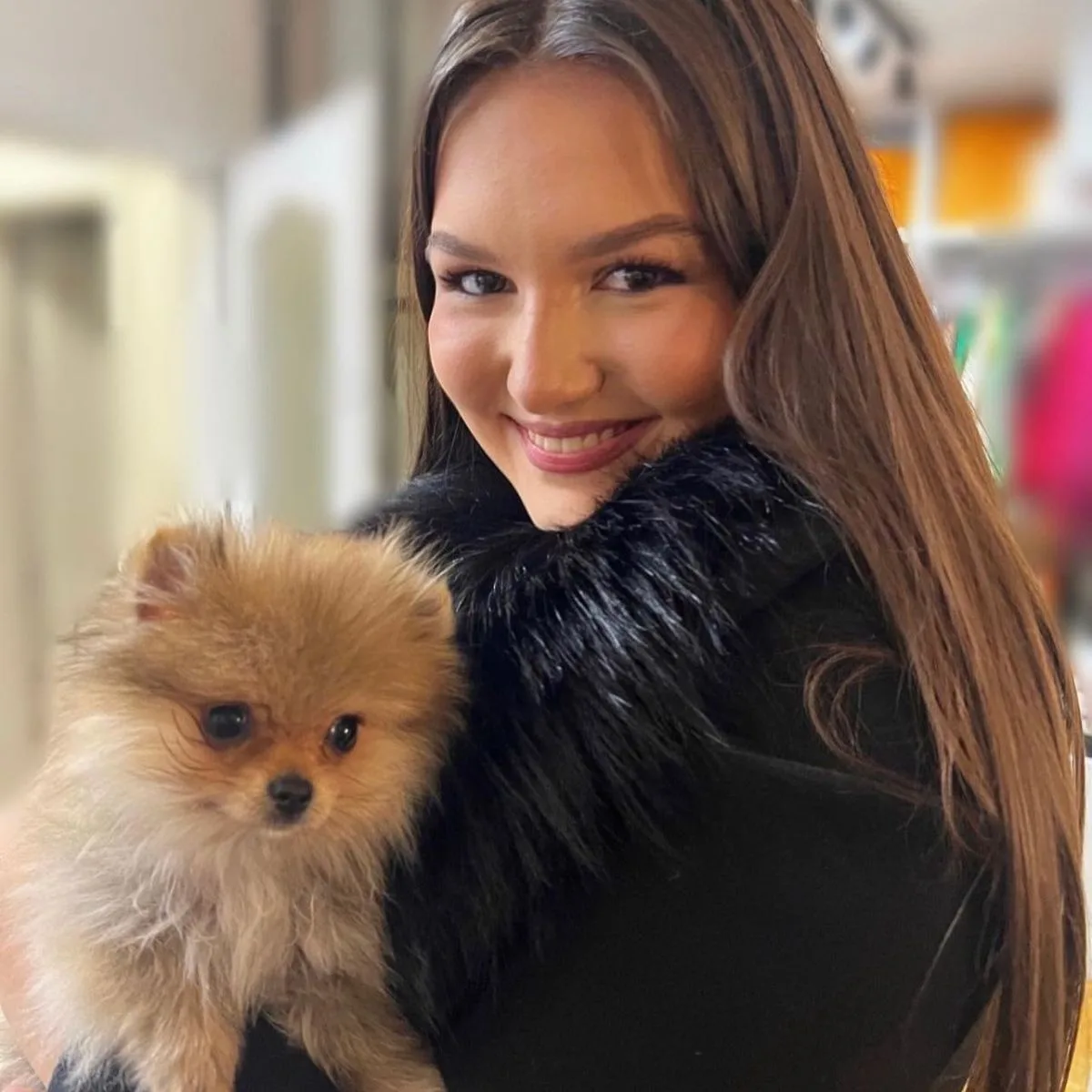
Zerina is an experienced content writer who found her passion for writing while pursuing her degree in English language and literature.
Growing up with a beloved dog as her companion, Zerina developed love for canines from a young age. Inspired by her bond with her furry friend, she decided to combine her writing skills with her love for dogs.
